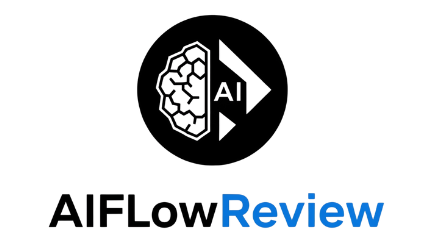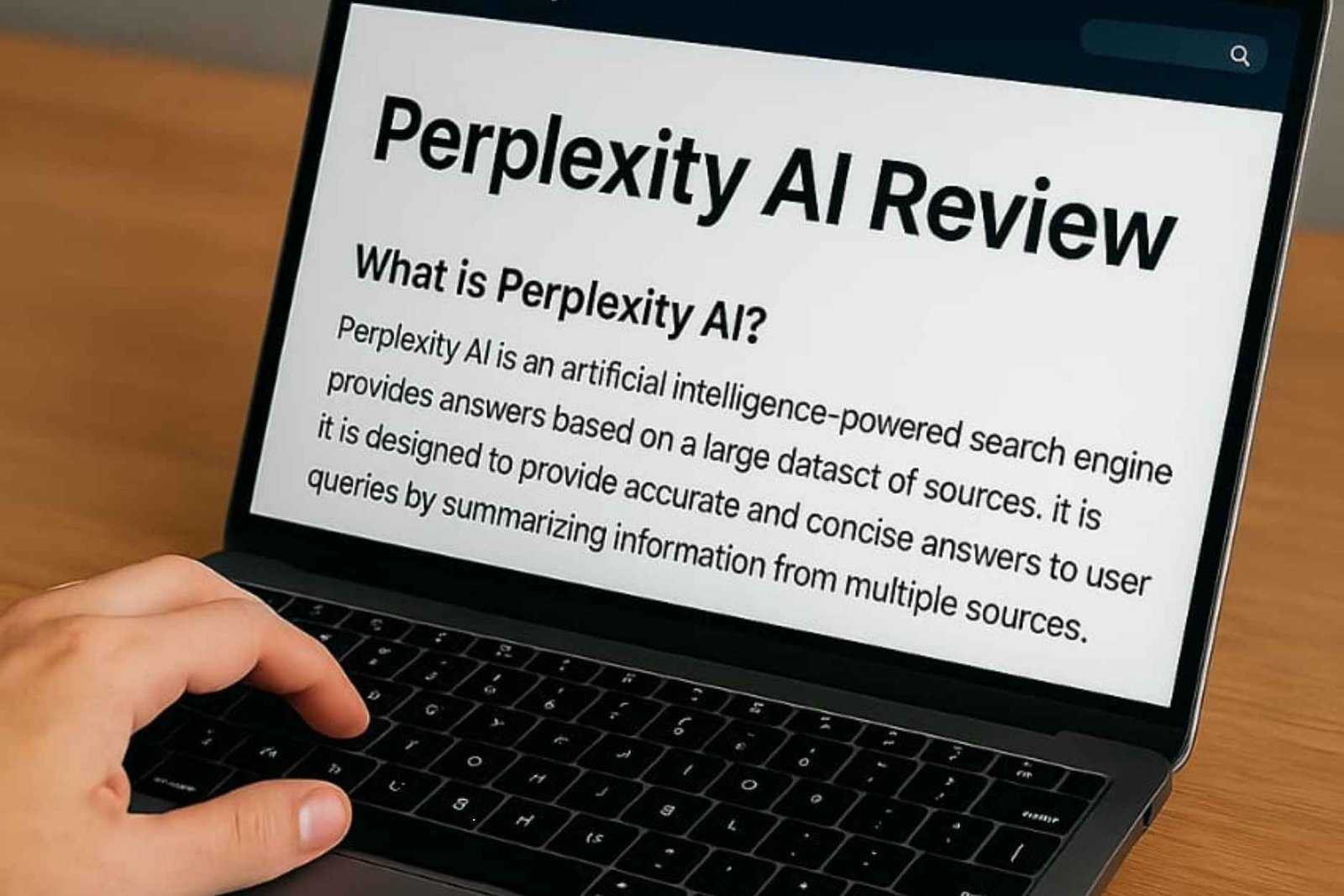If you’ve felt limited by outdated search engines or overwhelmed by information overload, you’re not alone. As answer engines quickly move into the spotlight, demands for transparent, reliable, and up-to-the-minute responses keep rising. In this perplexity ai review, I’ll explain how Perplexity AI has set itself apart in 2025, providing source-backed answers that actually cite where information comes from.
Perplexity AI isn’t just another chatbot—it’s an answer engine designed for accuracy, speed, and trust. Whether I’m researching complex tech trends, tracking market news, or verifying academic sources, I count on its ability to pull insights from reputable, real-time data. The shift from simple search results to curated, cited answers makes Perplexity a favorite for anyone who values truth, efficiency, and a clean user experience.
In the sections below, I’ll share what you should know about Perplexity’s unique approach, the real advantages it brings for research and professional work, and why it’s become a top choice for those who need dependable, search-powered AI in 2025.
What Is Perplexity AI?
Perplexity AI is changing the way I approach online search and research. Unlike traditional engines that only list links or brief summaries, Perplexity AI delivers fully detailed, source-backed answers in a conversational style. It’s not just another chatbot—it’s designed as an answer engine that provides clarity, transparency, and efficiency every step of the way. If you’re tired of digging through forums, news sites, or academic databases just to cross-check basic facts, this tool will feel like a breath of fresh air.

Photo by Tara Winstead
Core Purpose and Vision
Perplexity AI is built to answer complex questions using verified sources, acting almost like a research assistant that never sleeps. The platform was launched to solve the common problem of “information overload” by giving direct, useful answers without hidden agendas or excessive fluff. What I find most valuable is the transparency: Perplexity shows exactly where it finds its information, so anyone can verify the facts themselves. This clear approach boosts trust and allows users to dig deeper when needed.
Unlike most AI chatbots, Perplexity doesn’t only rely on pre-existing training data. Instead, it taps into current online content—including news sites, academic databases, and forums like Reddit—to provide timely and accurate answers. The service is available on both web browsers and mobile apps, making it convenient to access no matter where I am. For more insights and first-hand details about the tool, the official Perplexity AI site has a wealth of information.
Key Features That Set It Apart
Based on my experience and user reviews, these features make Perplexity AI stand out in a crowded field:
- Source Transparency: Every answer comes with visible citations, listing exactly where the information was found. This means fewer dead ends and much less guesswork.
- Diverse Data Sources: Perplexity pulls from a wide variety of publications and platforms, helping to paint a complete and unbiased picture on almost any subject.
- User-Friendly Design: I don’t have to navigate a maze of menus. The platform keeps everything clean and responsive—answers are quick, and the interface never feels cluttered.
- Deep Research Mode: When detail matters, Perplexity’s “Deep Research” tool digs through dozens of sources and synthesizes a full-length report without needing hours of manual effort. This feature is a game-changer for professionals, students, and anyone who values thorough research.
- Real-time Updates: Unlike older AI models that can feel outdated, Perplexity is always current, scanning the live web to keep responses as fresh and accurate as possible.
How Perplexity AI Works
At its core, Perplexity uses advanced AI models combined with real-time data collection. When I enter a question, Perplexity:
- Searches multiple sites and databases (including Reddit, official news sources, and niche communities).
- Aggregates and analyzes content, prioritizing quality sources.
- Presents responses with highlighted citations, so I can instantly verify or explore more details.
This method feels like speaking directly to an expert who pulls up documents and news clippings as you talk. If you’re curious about how others use this technology in daily life or business, the discussion on Reddit’s Perplexity AI use cases has honest experiences and tips from real users.
Why It’s Different from a Search Engine or Traditional Chatbot
While both search engines and chatbots can answer questions, Perplexity AI bridges the gap by combining the depth of search with the clarity of conversation. Instead of serving up an endless scroll of blue links, it packages answers with supporting facts right up front. I can see the logic behind its answers, and if I want more, I can click through to the full source or even ask follow-up questions with zero hassle.
For those exploring the broader landscape of AI-powered chatbots and assistants, it’s worth considering how Perplexity compares to top alternatives. Platforms like Wikipedia’s overview of Perplexity AI provide a helpful background for anyone wanting to go beyond just features and see the bigger picture.
At a Glance: What You Get with Perplexity AI
| Feature | Benefit |
|---|---|
| Source Citations | Fact checking is easy and direct |
| Diverse Sources | Broader perspectives, fewer blind spots |
| Deep Research Mode | Generates detailed reports in minutes |
| Real-Time Answers | Information always up to date |
| Free Basic Access | Try core features without needing an account |
| Cross-Platform | Use on web and mobile for on-the-go research |
By focusing on transparency, speed, and detail, Perplexity AI brings a fresh approach to answer engines, setting a new standard for how we expect AI to support our research, fact-finding, and daily knowledge needs.
Key Features and Functionality
Perplexity AI stands out by offering tools and techniques that make searching, researching, and analyzing information both fast and reliable. Its feature set is designed for researchers, students, and professionals who want more than surface-level answers. Here’s a look into the specific features that make Perplexity an answer engine built for trust, efficiency, and flexibility.
Real-Time Web Search and Source Transparency
Perplexity’s real-time web search is one of its defining strengths. When I ask a question, it scours the open internet, pulling data from news outlets, forums, research databases, and expert sources. Each response comes with clearly marked citations, including site names, timestamps, and direct links, helping me verify information without extra steps or second-guessing.
This system also ranks sources by credibility, prioritizing reputable publications and expert voices. As a result, answers are timely and much less prone to the kind of outdated information that plagues closed-AI models. The clickable citations not only back up claims but also invite deeper investigation when more context is needed. For me, this transparency boosts confidence in every answer.
Key advantages of this approach:
- Every detail is verifiable, thanks to visible citations.
- Citations include timestamps for up-to-date context.
- Answers are constantly refreshed as new sources emerge.
- Traceability makes it easy to spot trustworthy insights and weed out questionable sources.
If you want to better understand the importance of having features that support trustworthy content on AI platforms, check out the discussion on Essential Features for AIFlowReview Website.
Multi-Model and Retrieval Approaches
Perplexity AI doesn’t lock users into a one-size-fits-all engine. Instead, I can choose between several underlying AI models or let Perplexity auto-select the best fit based on my question’s complexity. This flexibility means that whether I’m seeking a straightforward fact, an in-depth analysis, or creative input, the platform adapts accordingly.
What’s the real benefit? When dealing with technical questions, a more robust model might kick in, while general knowledge queries are answered quickly by lighter engines. This setup minimizes lag and maximizes the relevance of every response.
- Manual Model Selection: Choose the AI model that best suits your needs, perfect for technical research or specialized questions.
- Auto-Select Mode: Perplexity evaluates your prompt and deploys the most capable model for the task.
- Tailored Retrieval: Whether the need is speed, creativity, or depth, the engine adapts on the fly for optimal performance.
For a broader comparison of how multiple AI models shape user experience, Perplexity AI vs. ChatGPT: AI Tool Comparison explains where these tools excel or fall short.
File Uploads and Data Analysis
One of the features I appreciate most is the ability to upload files directly into Perplexity AI for instant analysis. Whether it’s a PDF, image, CSV, or block of raw text, Perplexity goes beyond text chat—making it an effective research assistant for in-depth and technical projects.
With this function, I can quickly summarize academic papers, extract tables from spreadsheets, or even analyze an image’s content for key details. The results are delivered in plain language, complete with links to sources when available, so I can keep my workflow moving without switching tools or tabs.
Here’s how this feature expands Perplexity’s capabilities:
- PDFs: Get main takeaways from research papers, reports, or ebooks without reading everything.
- Spreadsheets (CSVs): Summarize data trends or spot discrepancies in a flash.
- Images: Extract text, context, or visual details to support visual research.
- Text Blocks: Quickly condense lengthy documents into actionable summaries.
This feature has proven especially useful for academic work, technical projects, and hands-on data analysis—areas where traditional chatbots can rarely compete.
For more about the top AI tools transforming research and writing, see this list of Top AI Content Writing Tools of 2025.
These core features show why so many professionals and researchers put their trust in Perplexity AI. By combining transparent sourcing, model flexibility, and advanced file handling, the platform delivers a level of reliability and usability that’s hard to beat in 2025.
Strengths: Where Perplexity AI Excels
Perplexity AI has carved out a strong reputation for its real-world usefulness and efficiency, making it a reliable companion for research, fact-checking, and staying informed. Its focus on delivering quick, source-backed results, along with an interface that makes it easy to dig into details or explore new angles, sets it apart in the world of AI tools. In this section, I’ll break down where Perplexity stands out, showing why it has become a favorite choice for both newcomers and power users searching for the best in AI-powered answers.
Real-Time, Cited Answers
Perplexity AI’s flagship strength is its ability to provide live, citation-backed answers in seconds. Whenever I type a query, it searches across current web sources, news outlets, academic publications, and forums. What makes this so effective isn’t just the speed but also the transparency. Every answer comes with highlighted source links, so I can instantly check the facts, read deeper, or evaluate the original context.
- No more second-guessing where data comes from.
- Each fact is directly traceable with timestamps and active source links.
- The platform regularly updates content, ensuring that answers are fresh and relevant.
Many users agree that Perplexity AI’s real-time citations dramatically cut down on research time, offering a much-needed blend of speed and trust compared to traditional engines.
Diverse and Relevant Source Pool
Unlike some AI chatbots that rely solely on a static database, Perplexity AI taps into a dynamic mix of sources with every query. The tool prioritizes authoritative sites but also doesn’t shy away from pulling insights from expert forums and active discussions, including platforms like Reddit. This means I’m not just limited to official news or surface-level facts—contextual forums and expert opinions are in the mix too.
- Broader scope means richer viewpoints on trendy or complex issues.
- Peer discussions, like those on Reddit, offer unique context and up-to-date advice.
- Academic and mainstream outlets are always included in the source mix.
This diversity helps prevent the tunnel vision that can creep into research when only a narrow set of sources is used. See examples of unique Perplexity AI use cases to understand just how flexible it can be.
Deep Research Mode
When a simple answer isn’t enough, Perplexity’s Deep Research feature is a lifesaver. It automates the entire research process, going through dozens of sources, synthesizing information, and delivering a well-structured report within minutes. As someone who does a lot of comparative research or multi-source analysis, I find this tool can save hours typically spent reading articles or stitching together insights manually.
Key benefits of Deep Research:
- Handles complex topics across fields like finance, tech, health, and history.
- Produces research summaries that can be exported as PDFs or shared pages.
- Scales from simple fact-finding to comprehensive industry overviews.
For a closer look at how Deep Research can handle extensive queries, the Getting Started with Perplexity page highlights practical tips and workflow ideas.
User-Centric and Efficient Interface
A good tool doesn’t just deliver information; it makes the process comfortable and intuitive. Perplexity excels here with its minimal, distraction-free interface. Responses are clear, cleanly formatted, and never buried in clutter. The citation system works with a single click, and it’s simple to mark, save, or organize important queries for later reference.
Here’s what makes the user experience stand out:
- Simple navigation—there’s no steep learning curve or overwhelming dashboard.
- Every answer is presented in an easy-to-read block, with sources directly underneath.
- Built-in organization for research projects or recurring questions.

Photo by Google DeepMind
Performance in Real-World Use
I’ve found Perplexity isn’t just a theoretical tool—it works under real conditions, on everything from product research to news checks and technical brainstorming. It’s even being used to automate parts of customer support, research summaries, and more. This flexibility is one of the main reasons it scores high with power users.
Common scenarios where Perplexity shines:
- Breaking news tracking and quick market updates.
- Academic research and comprehensive topic papers.
- Summarizing community opinions and forum discussions.
- Technical deep dives and comparative product reviews.
If you’d like to see how Perplexity compares to similar platforms and why it’s best for reliable, up-to-the-minute information, take a look at this in-depth comparison of Perplexity AI and ChatGPT.
Summary Table: Key Strengths at a Glance
| Strength | What It Means for You |
|---|---|
| Fast, Cited Answers | Instantly check sources and context |
| Diverse Sources | Broader, more balanced perspectives |
| Deep Research Tools | Automatic, expert-level analysis |
| Clean User Experience | Easy navigation and clear organization |
| Real-World Versatility | Works for news, research, and analysis |
These strengths explain why, in my perplexity ai review, I believe this platform is an excellent choice for those who value reliable, fast, and transparent information—whether you’re researching for work, school, or personal decisions.
Limitations and Weaknesses
Every powerful tool comes with its own set of limitations, and Perplexity AI is no exception. While the platform excels at real-time, cited answers and dynamic source aggregation, certain challenges can still affect the research experience. If you’re relying on Perplexity AI for heavy research, academic projects, or daily decision making, it’s smart to recognize these weaknesses upfront.
Occasional Hallucinations and Inaccuracies
One of the primary weaknesses I’ve encountered is the tendency for Perplexity AI to produce “hallucinations”—that is, presenting answers that are partially or completely incorrect. These imperfections often arise when the AI is piecing together information from multiple sources, but fails to validate the details or connects dots that shouldn’t be linked. Although the platform usually links to sources for easy fact-checking, not all suggested answers are equally reliable. This is especially noticeable on complex or highly technical topics, where nuance gets lost or facts are overgeneralized.
- Sometimes it misattributes data or conflates similar topics.
- Answers can be confidently phrased even when partially inaccurate.
- Sources are cited, but relevance and credibility can vary.
For a closer analysis, this list of Perplexity AI’s pros and cons breaks down common pitfalls reported by both users and experts.
Difficulty in Synthesizing Complex Information
While Perplexity shines for quick lookups and linking sources, it commonly struggles with synthesizing information from multiple places into a single, cohesive answer. Instead of true context-driven analysis, it can end up repeating facts rather than connecting insights. This weakness stands out during tasks that demand critical thinking, summarizing multiple viewpoints, or offering actionable conclusions. For in-depth comparative reports or research that crosses domains, users may notice the platform hardly matches the output of more advanced AI like Claude.
- Reports may feel fragmented or lack depth.
- Sometimes fails to weigh conflicting viewpoints or resolve discrepancies.
- Multi-threaded questions might yield surface-level responses.
You can find similar experiences described in the 2025 review on Queen Caffeine AI, which highlights struggles with deeper reasoning tasks compared to other leading AI models.
Limited Original Insight and Creativity
Perplexity AI excels at factual, source-based answers, but it’s less adept at providing fresh insights or creative ideas. When prompted with tasks that need out-of-the-box thinking, nuanced judgment, or emotional understanding, its answers can come off as robotic or generic. This limitation is common across many modern AI systems, but is especially noticeable with Perplexity due to its heavy reliance on source aggregation.
- Struggles with creative writing, brainstorming, or emotional nuance.
- Recommendations and summaries may feel formulaic.
- Less effective at generating new ideas or unique perspectives.
Insights from AI Demystified’s breakdown of Perplexity’s limitations add more context about where the tool currently falls short in mimicking human thinking and creativity.
Contextual and Domain Gaps
While Perplexity’s use of real-time web content is a strength, it can also be a weakness when data isn’t available, or when the platform fails to identify the right context for a given query. For niche industries, highly local topics, or queries that have limited online documentation, results may be shallow or off-the-mark.
- Answers in underrepresented fields can lack substance.
- Regional or language-specific results may be less accurate.
- Context switching in a conversation sometimes derails the logic.
Table: Common Weaknesses of Perplexity AI
| Weakness | Impact on User Experience |
|---|---|
| Occasional hallucinations | Risk of acting on inaccurate info |
| Poor synthesis for complex tasks | Surface-level reports, lack of nuance |
| Limited creativity | Generic ideas, no emotional intelligence |
| Contextual/domain gaps | Incomplete or shallow responses |
Recognizing these limitations helps you get the most out of the tool while staying mindful of when to double-check sources or use alternative platforms. For a full spectrum view, check out the detailed limitations outlined by AI Demystified for in-depth commentary.
By understanding both strengths and weaknesses, you’ll be able to make smarter choices about where Perplexity AI fits into your daily workflow and when it might need a helping hand from other tools or traditional research.
Pricing and Plans
Choosing the right AI platform often comes down to price, flexibility, and a clear understanding of what’s actually included. In this part of my perplexity ai review, I’ll break down the Perplexity AI pricing structure, explain its core offerings, and compare value for money versus other solutions on the market. The goal is to help you see if Perplexity fits your budget, whether you’re an individual researcher, a startup team, or a large organization.
 Photo by Kaboompics.com
Photo by Kaboompics.com
Free Access: Basic Functionality with No Barriers
Perplexity AI stands out by allowing anyone to get started for free. With no account needed, users can access most of the answer engine’s core features right away. This includes real-time search, citation-backed responses, and even deep research tasks—although the number of deep research queries per day is limited on the free plan.
Free tier highlights:
- Access real-time web search and citations with no registration
- Enjoy a clean, ad-free interface with basic privacy controls
- Use deep research mode (with daily query caps)
This approach makes it easy to test Perplexity for everyday lookups or put it through its paces without committing financially. For many casual users and students, the free version is more than enough for routine research needs.
Subscription Plans: Pro and Max Tiers
For users who need more from their AI assistant—think unlimited research, enhanced speed, priority support, or advanced data privacy—Perplexity Pro and Max plans are available. These subscriptions unlock higher usage caps and extra functionality designed for power users, businesses, or anyone who often works with large data sets or multiple projects.
Here’s a snapshot of the typical subscription structure:
| Plan | Monthly Price (USD) | Key Features |
|---|---|---|
| Free | $0 | Limited deep research queries, real-time search, basic privacy |
| Pro | $20–$30 | Unlimited deep research, PDF export, priority access, advanced privacy |
| Max | $40–$50+ | Enterprise integrations, higher limits, custom support, team collaboration tools |
Actual prices may shift, so always check the latest on Perplexity’s official site before making a decision. Paid tiers give you more flexibility and remove daily research limits, appealing to heavy researchers and organizations that demand uninterrupted workflows.
What You Get for Your Money
Both Pro and Max subscribers benefit from:
- Unlimited deep research and comprehensive reports
- Access to export results, create shareable pages, or download as PDFs
- Priority performance (faster responses, dedicated resources)
- Advanced privacy settings (such as opting out of AI data usage)
- Customer support with quicker response times
Choosing a higher tier makes sense if you’re running ongoing projects, need to collaborate with a team, or handle sensitive information where privacy is key.
Value vs. Market: How Perplexity Compares
When you compare Perplexity’s plans to broader AI chatbot pricing in 2025, it stacks up well for versatility and transparency. As outlined in this breakdown of AI chatbot pricing models in 2025, many competing tools charge anywhere from a few dollars for basic subscriptions to thousands for large-scale, enterprise-grade projects. Perplexity’s flat monthly pricing is easier for teams to budget, while freelancers or students can stay productive without piling up costs.
You’ll find most mid-market AI chatbots fall in a similar range—$20 to $50 per month—especially those built for research and automation. But unlike some tools that hide features behind additional add-ons, Perplexity’s plans are refreshingly straight-forward.
For anyone focused on ROI, it’s helpful to explore common questions about AI tools, where pricing and plan flexibility come up often alongside tips for choosing between free and paid solutions.
Who Should Consider Upgrading?
- Individuals running research-heavy projects needing no daily caps
- Professionals who require more privacy, speed, or support
- Teams needing exporter tools or workflow integrations
- Enterprises managing AI investments at scale
The free plan serves as a real trial—no tricks, no limited-time access—while paid plans step in for those growing needs. As with any tool, the smartest move is to weigh your own project frequency, collaboration demands, and content handling against the features in each subscription.
By offering generous free access and flexible paid plans, Perplexity AI makes it easy for every user to scale up or down with their evolving requirements. Whether you’re testing the waters or ready to build Perplexity into your daily research routine, there’s a price point to match your goals.
Comparisons: How Perplexity Stacks Up Against Alternatives
Understanding Perplexity AI’s real value requires more than a standalone review. The best way to gauge its practical benefits is by seeing how it performs next to top alternatives in 2025. Many users arrive at Perplexity after frustrations with generic search results or chatbots that never cite sources. Here’s how Perplexity measures up when compared directly to platforms like ChatGPT, Claude, Copilot, and leading AI search engines.
Perplexity AI vs. ChatGPT
The Perplexity AI experience feels distinct from ChatGPT, especially when it comes to live, cited answers. While ChatGPT remains a conversational heavyweight, its free version lacks real-time internet access and often can’t point to where its information comes from. Perplexity, on the other hand, is transparent with citations and pulls fresh answers from across the web—including forums like Reddit, which add real user perspectives often missing from more closed systems.
In side-by-side use, I noticed:
- Perplexity’s search-first design: Direct answers, easy-to-check sources, and focused responses.
- ChatGPT’s chat-first design: Longer, sometimes more creative conversations, but less factual clarity unless using the (paid) latest models.
- For strict research or fact-checking, Perplexity is the winner. For creative tasks or open-ended brainstorming, ChatGPT still holds ground.
A complete breakdown of these differences is covered in this detailed comparison of Perplexity AI and ChatGPT.
Perplexity AI vs. Claude and Copilot
Both Claude and Microsoft Copilot aim to deliver more nuanced and context-aware responses than standard chatbots. In my testing, Claude often excelled at synthesizing complex, multi-source research and delivering balanced, readable answers—sometimes surpassing Perplexity when depth and critical reasoning were required. Copilot, integrated directly into the Microsoft ecosystem, shines for productivity tasks and structured email writing, though it sometimes flags sensitive topics.
Perplexity remains competitive thanks to these features:
- Source-rich answers: Every fact can be traced back to its origin.
- Open web access: Pulls current events and discussions directly into your results.
- No sign-up required: Many alternatives lock important features behind paywalls.
When your research needs go beyond quick fact-finding—especially in academic or content-heavy situations—Claude may have an edge. However, if you value transparency and are researching news, forums, or recent studies, Perplexity’s approach stands out.
Perplexity vs. Other AI Search Engines
In the broader AI search engine category, Perplexity holds its own thanks to speed, interface design, and visible sourcing. Platforms like You.com and Andi are strong competitors, offering different takes on private search or collaborative workflows. For basic queries or everyday lookups, the speed and utility of Perplexity are hard to beat.
Here’s a quick snapshot of how Perplexity compares to some of these platforms:
| Feature | Perplexity AI | ChatGPT (Free) | Claude | Copilot | You.com |
|---|---|---|---|---|---|
| Real-time Web Access | Yes | No | Yes* | Yes | Yes |
| Cited Sources | Yes | No | Yes | Yes | Yes |
| Free Tier | Yes | Yes | Yes | Yes | Yes |
| Document Upload | Yes | Yes (Plus) | Yes | No | Yes |
| Forum Integration | Yes (Reddit) | Limited | Limited | No | No |
| Depth of Answers | Decent | Varies | High | High | Varies |
*Claude’s web access may depend on the specific version and subscription.
These differences matter when you’re deciding how to handle detailed topic research or daily work queries.
For a broad overview of other AI platforms, see best AI search engines tested in 2025.
Community and Expert Opinions
User feedback shows that while many platforms offer similar core features, real-world preference often boils down to ease of use, reliability, and answer transparency. Perplexity’s community frequently points to its source transparency, user-friendly interface, and fast, ad-free results as sticking points. For more on why some users stick with Perplexity—and some leave for alternatives—check out the ongoing discussion on favorite Perplexity alternatives.
Summary Table: Perplexity Against Its Rivals
To make these comparisons more scannable, here’s a table summarizing key contrasts:
| Platform | Best For | Major Strength | Notable Weakness |
|---|---|---|---|
| Perplexity | Source-backed research | Real-time, cited answers | Can struggle with nuance |
| ChatGPT | Creative and conversational | Open-ended dialogue, creative prompts | No real-time web for free users |
| Claude | Context-rich answers | In-depth synthesis, clear explanations | Less transparent with sources |
| Copilot | Productivity workflows | Task automation, MS ecosystem integration | Avoids sensitive topics |
| You.com | Private AI search | Customization, privacy-focused | Interface learning curve |
In every perplexity ai review, the real takeaway is this: know your project and workflow priorities. Perplexity delivers the best mix of speed, source-backed confidence, and open-web reach for mainstream research and real-time queries. If you need stronger creative skills or expert-level synthesis, alternatives like Claude and Copilot deserve a closer look. For a wider roundup, check out top AI search engines in 2025.
By comparing these options side by side, it’s easier to find the AI platform that fits your daily work and research needs.
Perplexity AI Rating and Final Verdict
When weighing Perplexity AI against other answer engines and chatbots in 2025, it’s important to consider both the expert scores and real user feedback. This section breaks down my overall impressions, the community’s sentiment, and where Perplexity stands on the rating scale. I’ll also cover final takeaways that matter if you want reliability, transparency, and performance in your AI toolkit.
 Photo by Google DeepMind
Photo by Google DeepMind
Overall Rating: A Balanced Perspective
Perplexity AI consistently earns solid marks from testers and end users alike. Most professional reviews position it in the 7/10 to 9/10 range, depending on whether research accuracy or deep-dive answer quality matters most for you. For core use cases—real-time search, answer clarity, and source transparency—Perplexity shines above many alternatives.
Common praise centers on:
- Fast, cited answers: You get immediate insight, and citations let you drill down for more detail.
- Diverse and up-to-date sources: Its integration with platforms like Reddit provides unique angles you won’t always see on search engines or other AI assistants.
- User experience: The minimalist design makes research sessions smooth, whether you’re using a browser or a phone.
Here’s how Perplexity compares on key criteria, drawing from expert evaluations and user reviews:
| Criteria | Perplexity AI Score (2025) |
|---|---|
| Real-Time Accuracy | 8.5 / 10 |
| Source Transparency | 9 / 10 |
| Ease of Use | 9 / 10 |
| Research Depth | 7.5 / 10 |
| Synthesis Skill | 6.5 / 10 |
| Overall | 8 / 10 |
(For a detailed performance breakdown, check out this in-depth head-to-head review of Perplexity AI and Grok AI.)
What the Community Says
Feedback from working professionals, researchers, and users on forums confirms Perplexity’s position as a robust tool for daily research. Most reviews highlight these strengths:
- Trustworthy citations and credibility of information
- User-friendly layout that speeds up fact-finding
- Good value at the free tier, with paid tiers offering extra speed and research depth
However, the community also flags occasional stumbles with answer synthesis, especially on complex or controversial topics. Some users note the need to double-check answers with primary sources when working on highly technical or sensitive issues.
If you’re curious about hands-on impressions, the review at Team-GPT’s Perplexity Review dives into practical scenarios and where Perplexity fits among the best productivity tools.
When Perplexity Delivers Its Best
The platform is strongest when you need:
- Quick, factual answers pulled from the current internet.
- Clearly cited responses that make it easy to fact check and trace logic.
- Automation for heavier research projects, like drafting brief reports or collecting top community opinions.
It’s a top pick for students, working professionals, journalists, and anyone who values time and accuracy equally.
Where It Falls Short
Perplexity isn’t perfect. You may feel its limitations most on:
- Deep synthesis tasks requiring complex analysis or original argumentation.
- Topics with little online footprint or rapidly changing subject matter.
- Occasional inconsistent sourcing or less polished summaries.
In those circumstances, a tool with better critical reasoning or editorial voice (like Claude or Copilot) can be a better fit for advanced research and content work.
Perplexity AI in the 2025 Chatbot Market
After months of testing and reading peer comparisons, I believe Perplexity AI holds steady as one of the top contenders in the “answer engine” space for 2025. It’s faster and more transparent than many alternatives, especially if you want answers you can triple-check with a click. If you want to see how it competes with models like OpenAI’s ChatGPT across speed, accuracy, and use case, take a look at this Perplexity vs ChatGPT performance comparison.
So far, Perplexity AI gives as much as it promises: a cleaner, more direct path to trustworthy information. For people tired of searching for the truth in a sea of ads, distractions, and stale data, it’s a welcome change.
The results of this perplexity ai review show a tool that stands up under scrutiny, working well for everyday research—and finding its sweet spot as a new hybrid between chatbot, search engine, and research assistant.
Conclusion
This perplexity ai review highlights why Perplexity AI has become a trusted choice for those who want fast, transparent, and reliable answers. The platform’s dedication to source credibility and factual accuracy supports better decision-making in daily research and professional work. Real-time web access, deep research features, and an intuitive interface make information gathering more efficient for everyone, from students to AI experts.
Source-backed responses set Perplexity apart in a crowded market, benefiting anyone tired of guesswork when verifying the latest facts or trends. For those interested in comparing Perplexity with other leading options, the AI tools comparison guide offers further insights on strengths, weaknesses, and fit for your workflow.
The expectations around trustworthy AI will only grow. If you value clarity and accountability in your tools, Perplexity AI is well worth trying. Thank you for reading—share your own experience or questions below, and stay tuned for more expert reviews on next-generation AI solutions.
Looking Ahead: Raising the Bar for AI Research
As demands for accurate and transparent information rise, platforms like Perplexity challenge traditional search habits and inspire better practices in digital research. I see Perplexity’s commitment to verified, real-time data as a step forward for anyone building projects or making decisions in the AI space. Explore how the right AI platform can transform your workflow and keep questioning what you read—because in today’s world, credible sources matter more than ever.

















